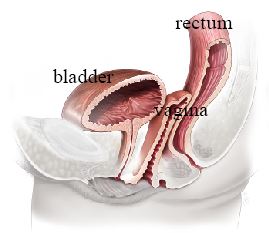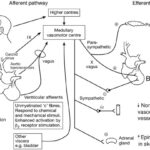Vaginal cuff surgery, commonly performed during total hysterectomy, involves suturing the top of the vagina after removal of the uterus. While typically safe, post-operative infections are a significant concern, especially those caused by anaerobic organisms such as Bacteroides species. These infections can escalate rapidly and lead to severe complications if not promptly addressed.

Understanding Bacteroides in the Post-Surgical Context
Bacteroides spp., particularly Bacteroides fragilis, are obligate anaerobic, gram-negative bacilli that are normal inhabitants of the gastrointestinal and genitourinary tract. Their virulence stems from:
- Polysaccharide capsule promoting abscess formation
- Beta-lactamase production conferring antibiotic resistance
- Ability to evade host immune response
In post-hysterectomy settings, Bacteroides may translocate to the surgical site, especially in cases involving contaminated instruments, bowel injury, or poor aseptic technique.
Clinical Manifestations of Bacteroides-Induced Vaginal Cuff Infection
Symptoms and Signs
- Fever (>38°C)
- Lower abdominal or pelvic pain
- Foul-smelling vaginal discharge
- Vaginal cuff tenderness on exam
- Rebound tenderness or guarding in severe cases
- Signs of systemic infection (tachycardia, leukocytosis)
In advanced cases, cuff dehiscence or pelvic abscess may occur, necessitating emergency surgical intervention.
Diagnostic Protocols for Post-Operative Vaginal Cuff Infections
Laboratory Investigations
- Complete Blood Count (CBC): Elevated white blood cell count
- C-Reactive Protein (CRP): Marker for inflammation
- Blood Cultures: If systemic signs are present
- Vaginal swab or wound culture: For bacterial identification and sensitivity
Imaging Studies
- Transvaginal Ultrasound: First-line to assess fluid collections or abscess
- CT Scan with Contrast: Preferred for deep pelvic abscess or concern for dehiscence
Antimicrobial Management of Bacteroides Infections
Empiric and Targeted Therapy
Empiric antibiotic therapy should cover anaerobes, including Bacteroides fragilis. Recommended regimens include:
- Piperacillin-Tazobactam (IV)
- Ertapenem (IV)
- Clindamycin + Gentamicin
- Metronidazole (oral or IV) – specific for anaerobes
Duration of therapy varies by severity but typically spans 7–14 days. Transition to oral antibiotics is permissible once the patient is afebrile and tolerating oral intake.
Surgical and Procedural Interventions
Indications for Surgical Management
- Failure to respond to antibiotics
- Abscess formation requiring drainage
- Cuff dehiscence with peritonitis or bowel involvement
Interventional Options
- Percutaneous drainage of pelvic abscess (image-guided)
- Exploratory laparotomy or laparoscopy for debridement
- Re-suturing of dehisced vaginal cuff
- VAC therapy (Vacuum-Assisted Closure) in severe wound infections
Prevention of Vaginal Cuff Infections by Bacteroides
Pre-Operative Measures
- Adequate bowel prep if indicated
- Prophylactic broad-spectrum antibiotics prior to incision (e.g., cefazolin + metronidazole)
- Strict adherence to sterile surgical protocols
Intra-Operative Considerations
- Meticulous hemostasis and tissue handling
- Avoidance of excessive vaginal packing
- Effective cuff closure using delayed-absorbable sutures
Post-Operative Care
- Monitor for early signs of infection
- Avoid early resumption of vaginal intercourse or heavy lifting
- Timely wound inspection during follow-up visits
Risk Factors for Bacteroides Infections Post-Vaginal Cuff Surgery
| Risk Factor | Relevance |
|---|---|
| Diabetes mellitus | Impaired immunity and wound healing |
| Obesity | Increased risk of dehiscence and contamination |
| Immunosuppression | Poor infection control |
| Prolonged surgery duration | Increased contamination risk |
| Intraoperative bowel injury | Direct anaerobic contamination |
| Inadequate prophylactic antibiotics | Poor anaerobe coverage |
Complications and Long-Term Sequelae
- Chronic pelvic pain
- Pelvic abscess recurrence
- Fistula formation (e.g., rectovaginal)
- Adhesion-related infertility or bowel obstruction
- Sepsis in untreated infections
Early intervention and appropriate antimicrobial therapy significantly reduce the risk of complications.
FAQs:
What is Bacteroides infection after vaginal cuff surgery?
An infection by anaerobic bacteria, commonly Bacteroides fragilis, occurring at the surgical site after hysterectomy, leading to inflammation, discharge, and possibly abscess formation.
How serious is a Bacteroides infection post-hysterectomy?
If untreated, it may cause abscesses, cuff dehiscence, and sepsis. Prompt antibiotic therapy and, if needed, surgical intervention are crucial.
Can these infections be prevented?
Yes, through effective surgical techniques, prophylactic antibiotics, and close postoperative monitoring.
When should a patient seek medical attention?
If experiencing persistent fever, pelvic pain, or abnormal discharge after hysterectomy, immediate medical evaluation is advised.
What is the recovery time from such infections?
Recovery may take 1–3 weeks depending on severity, treatment adequacy, and individual health status.

